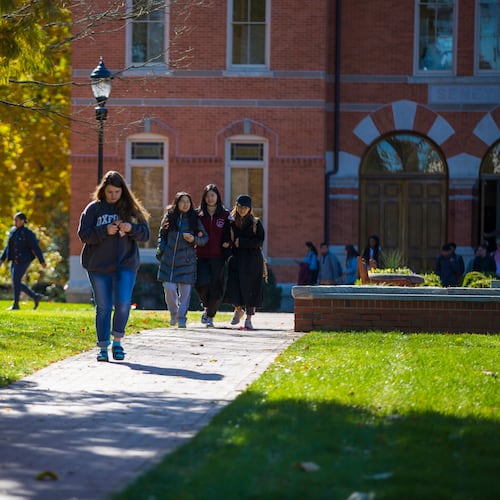Georgia House Bill 444 would significantly change the state's popular dual enrollment program that allows high school students to take state-funded college courses.
Supporters of the bill say the program's costs have skyrocketed in recent years and changes are necessary to make it sustainable. About 52,000 students are currently enrolled in the program.
Critics say the changes will limit education opportunities for many low-income and rural students.
Here are five things to know about the dual enrollment program and proposed legislation, according to information in the bill and its sponsor, state Rep. Bert Reeves, R-Marietta.
How the dual enrollment program works
Eleventh and 12th graders make up the majority of students enrolled in the program, but 10th graders can be enrolled in the program if they’re in an eligible Career, Technical and Agricultural Education course at one of the state’s 22 technical colleges.
Enrollment in the program has almost doubled in the past four years, from about 27,000 students in fiscal 2016 to nearly 52,000 students in fiscal 2019.
How the program is funded
The program, currently budgeted at about $100 million, is funded through the state's general budget. The state pays the public or private college where the student is taking the class. Those classes at most Georgia regional and state universities average between $169 and $182. The fiscal 2019 budget for the program was about $105 million.
What changes are being proposed?
The dual enrollment program is popular but expensive, and state leaders want to cut the program’s costs. To do that, Reeves’ bill proposes limiting students to a total of 30 college credit hours and limit courses mainly to 11th and 12 grade student. Students can currently take 15 credit hours a semester. If students wanted to take more than 30 total hours, they would have to pay for the additional classes.
What does this mean for students currently enrolled in the program?
Students who take one of the state's 17 High Demand Career tracks, including practical nursing and aviation technology, in the technical college system are grandfathered to have unlimited hours to complete the coursework necessary to receive a high school diploma. Students who enroll in the program after June 30 in one of those tracks will receive 30 credit hours of state paid dual enrollment and then be eligible for an additional 30 hours under the state's HOPE Grant program.
Students who are not on one of those tracks with 19 or more credit hours by June will receive 12 more hours of state paid courses.
Students with 18 or fewer credit hours are eligible to take up to 30 credit hours.
Is there a connection to the HOPE Scholarship?
The state’s HOPE Scholarship program pays most of the tuition for college students who meet and maintain certain academic qualifications. Funding for the dual enrollment program and HOPE Scholarship program are not connected.
What’s next?
Georgia's bill, if adopted and signed by the governor, would take effect for the 2020-21 school year. The state Senate passed the bill Tuesday.
Georgia is one of six Southern states considering changes to its dual enrollment program, according to the Southern Regional Education Board. Florida, for example, has legislation that would allow homeschooled students to take college courses. A bill in Tennessee would eliminate a one-year residency requirement for students to be eligible for a grant to take dual enrollment courses.
About the Author
Keep Reading
The Latest
Featured



